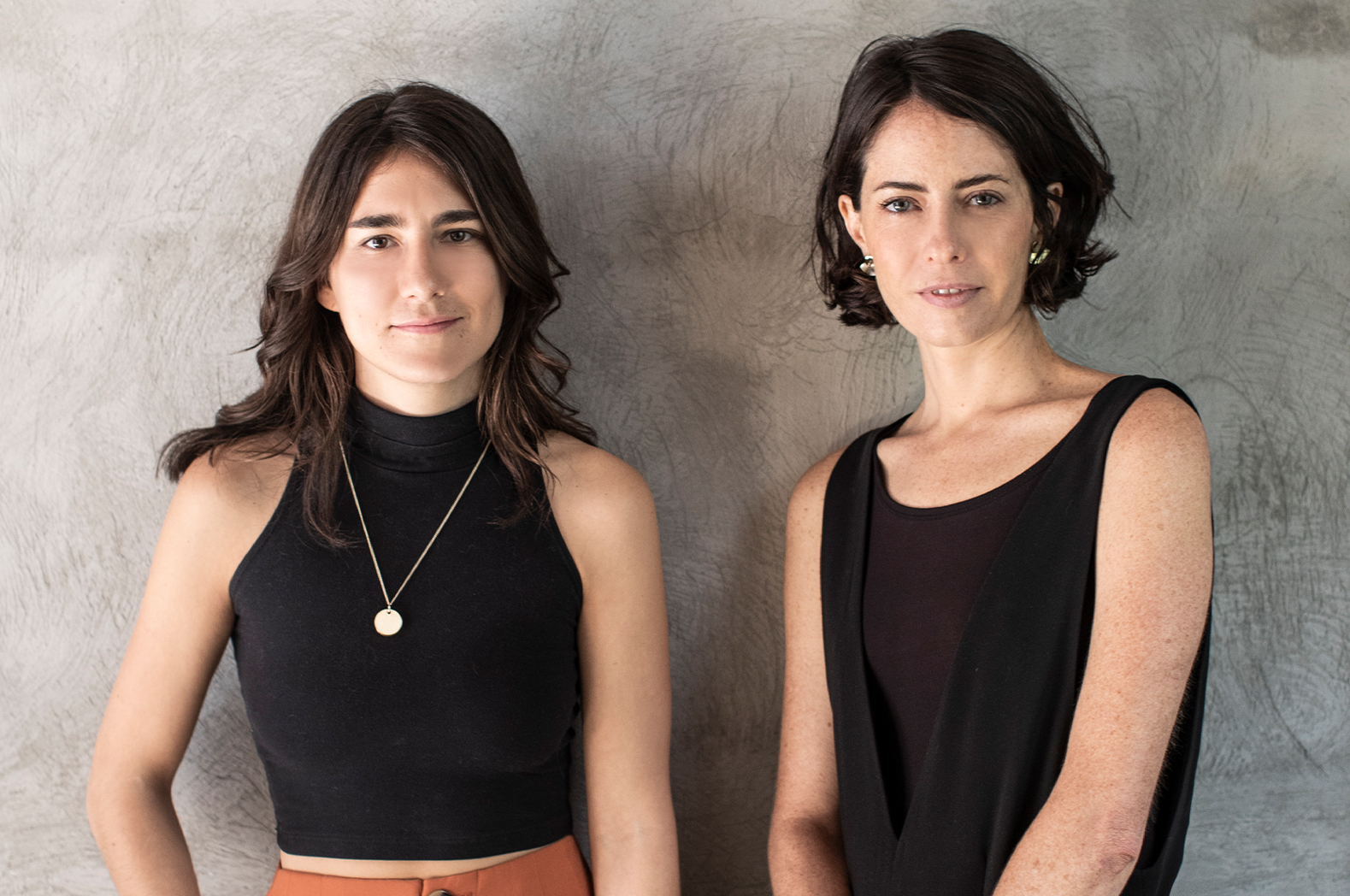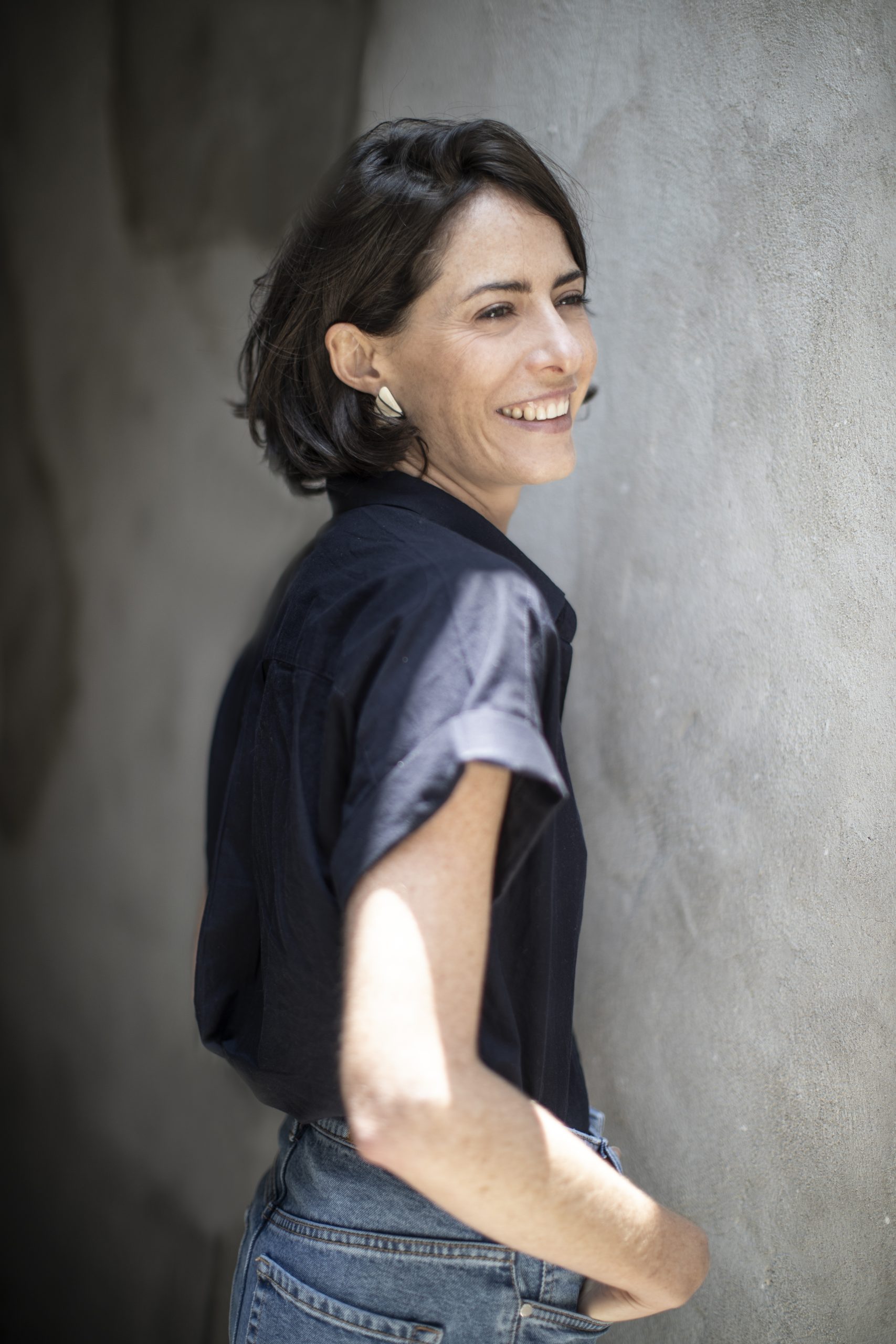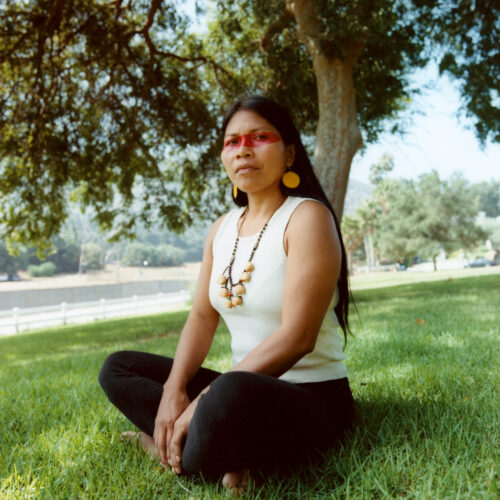Leer en español
Since the early twentieth century, the interior and furniture design scene in Mexico has been led by influential women. Immigrants who arrived to develop their professional careers in Mexico, such as the textile designer Cynthia Sargent in 1951, or the Cuban furniture designer Clara Porset in 1938, were crucial for the development of the discipline. Porset was also a curator and professor, understanding from the beginning that, as a woman, she had to work twice as hard because of the skepticism given merely for being female.
Moreover, the first woman to graduate from architecture in Mexico was Veracruz-raised María Luisa Dehesa in 1937, but it was not until 1960 that Aurora Campos Newman obtained for the first time as a woman the title of Industrial Designer from the Universidad Iberoamericana of Mexico City.
Today, gender bias is only beginning to be redefined. Women are being heard, even though they still face skepticism, and the macho behaviors of classmates, teachers, and colleagues in the field are barely becoming visible. The #MeToo movement is still prompting substantial reverberations in the industrial design and architecture industries, both historically dominated by men.
For example, for over five months this year, the schools of Architecture and Industrial Design of the National Autonomous University of Mexico (UNAM) were closed due to a student-led protest that resulted from indifference to more than 300 testimonies of violence against women. A letter addressed to the rectory of the UNAM signed by Organized Women of the Faculty of Architecture (MOFA) on Wednesday, Sept. 8, read: “NEVER AGAIN WILL YOU HAVE THE COMFORT OF OUR SILENCE.”
To continue this discussion, LATINA spoke with Mexico City-based industrial designers Andrea Flores and Lucía Soto, who founded Comité de Proyectos, an interior and furniture design firm, in 2014. The two discussed their careers and perspectives on the growth of the design world in Mexico. This conversation has been edited for clarity.
- Lucía Soto of Comité De Proyectos
- Andrea Flores of Comité De Proyectos
How did Comité de Proyectos start?
Lucía Soto: Andrea and I knew each other through mutual friends but our professional relationship began when I interned at mob, where she worked. That was where we germinated, it was the mother ship. I was there for four years and Andrea for five, and in 2014 we decided to undertake our own project.
We each started working from our homes, without an office, without investment, and without savings. Little by little with furniture and interior design projects. And in 2016, we participated for the first time in “Inédito” as part of Design Week – which gave us more visibility. It was the first time that we made a collection with a purely poetic, aesthetic, and conceptual motive. They weren’t pieces for clients, they were more for expressing and experimenting. This type of work has really marked the trajectory of the Comité.
What was the process of making yourselves known as women in the design field in Mexico?
LS: We were also fortunate to be supported by decision makers who were mostly women. The one who sought us out from the beginning was Andy [Andrea] Cesarman, the first time we entered Design Week. I don’t know what would have happened if there hadn’t been a woman organizing and if maybe they wouldn’t have looked for us if that was the case. But I believe we have felt this sense of camaraderie, which has also been experienced from the perspective of the media, with Greta Ancila from Glocal or Monica Khemsurov from Sight Unseen. There were several women who threw the rope at us as if to say “get on over here.”
Andrea Flores: Carmen Cordero from the Galería Mexicana de Diseño has also supported us a lot. You notice there are many women up there steering the design ship in Mexico, something that is very different from other places.
You have also collaborated with Mexican artisans, no?
Andrea Flores: Yes, we were invited to participate in “Visión y Tradición” as part of Design Week, an event which was the precursor for Ensamble Artesano, founded during the start of the Covid-19 pandemic in Mexico.
LS: Andy Cesarman transformed it into an initiative to support artisan communities in Mexico, no longer so experimental but to help artisans to sell their work with the feedback of designers to create commercial pieces. Cesarman is an important character in our history and in the history of design in Mexico today.

Londres apartment (2020), Colonia Juárez, CDMX. Interior Design Project. Furniture Design and Manufacture
Yet this was not always the case. What was your training like and how have you experienced this change?
AF: There is a super difference. When I studied (grad. 2007) it was a more masculine world and there were very few women in school for Industrial Design (I.D.) compared to when Lucía studied (grad. 2010). There was a sudden boom of women during that transition and the issue of having more women in the design scene in Mexico began to open up.
The UAM (Metropolitan Autonomous University) was a bit difficult for me. I finished my degree with a three-year course at the IED (Istituto Europeo di Design) in Barcelona because I was more into the conceptual and aesthetic part. Unlike Lucía who had workshops throughout her career at UNAM (National Autonomous University of Mexico), she is more technical. This is how we complement each other.
LS: It is important to note we must be aware of our privileges. I did go to a public school but my parents had the necessary resources so that I didn’t have to work during my studies. But, aside from that, I am the only woman in my family who studied I.D. My whole family — my dad, all my uncles and a couple of cousins — have studied I.D. at UNAM. So I have already entered into the Soto legacy in the UNAM. My uncle was the founder of the degree and was the director, and my father was a longtime professor at the UNAM and the UAM. He has been a super important figure in many ways but especially in the professional part.
What is your relationship with architects like?
LS: The reality is it’s been a bit difficult. In one of our projects, we worked with an office of two male architects, which is where I have most clearly felt a workplace problem that had to do with gender. One of the architects had respect for me — because I am his equal, I own my office. But we collaborated on that project with Fer, a girl who worked with us at Comité and he kept interrupting her when she spoke and, well, the mansplaining, right? She came to us to say she did not feel heard and that everything she said was worthless.
Once, we brought a male intern in for additional support and the architect directly told me: “Oh, finally you bring someone with whom we can work!” Literally, just because he was a man and although Fer had way more experience.
And what’s more, the architect was not comfortable working with a designer. That in itself is an issue among architects and designers. There is always this assumption that the architect “knows,” and the designer “plays.”
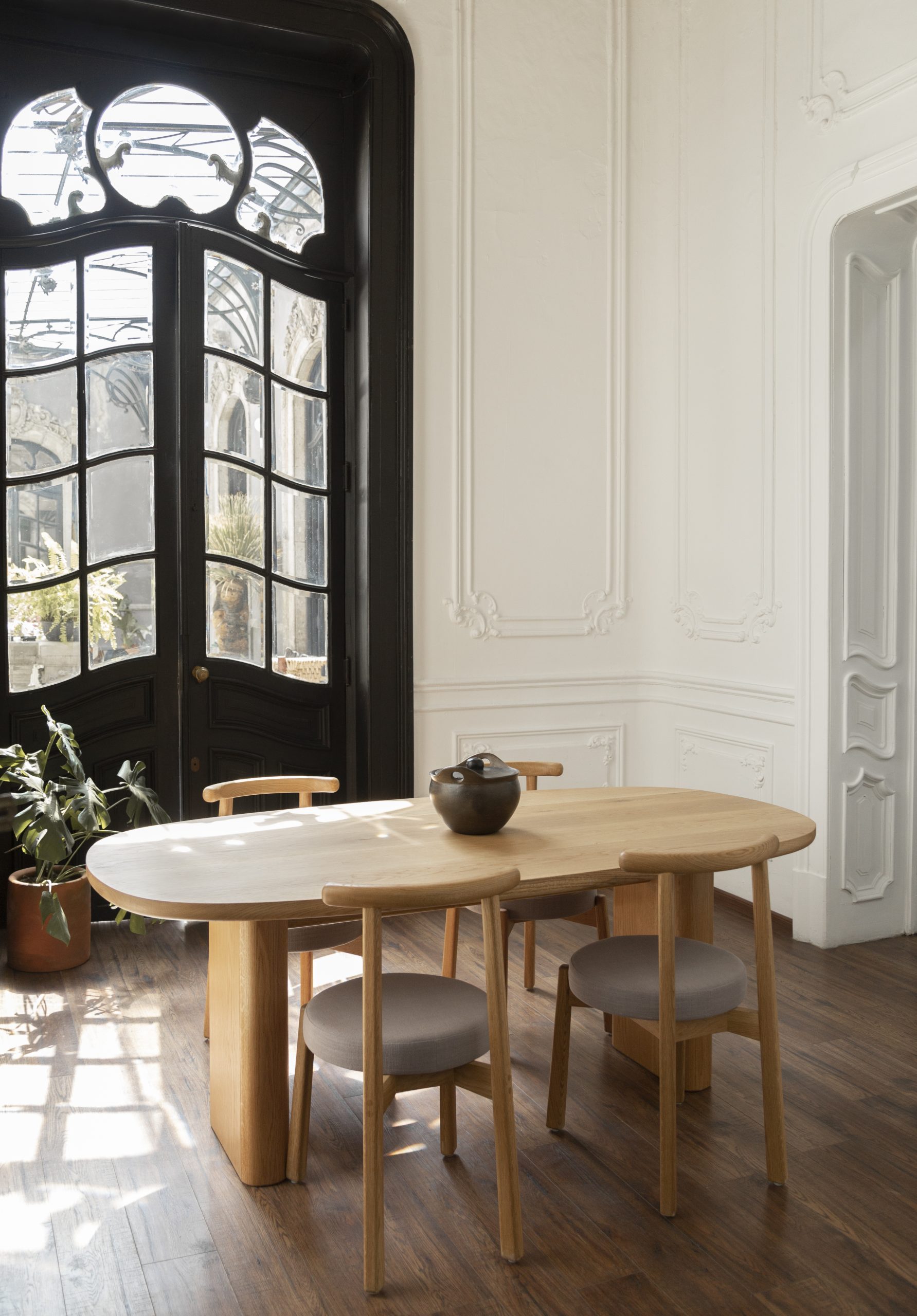
De la Paz dining table. Designed to make a statement around the beauty of white oak’s veneer.
And the term mansplaining is relatively new to our vocabulary.
AF: Of course, and it does happen. You are not crazy!
LS: It’s not in your head! You are not overreacting when you feel that he is deliberately shutting you up.
AF: When I was workshop manager at mob, for example, leading the workshop like anyone else would really cost me. We had a master carpenter who was very skeptical of me: “Why is this girl coming to tell me what to do and what not to do? Let the boss tell me, why you? And even less coming from you, a woman.”
Recently, one of our women collaborators, Ale, was approached by a carpenter who came to comment on her body and she obviously felt attacked. But her reaction was: “my body has nothing to do with it, I come here to work.” We had a talk with the woodworking team and while there is obviously still a lot of work to do, at least we are talking about these things.
Before, with what happened to this girl, maybe she wouldn’t even have had the voice to say: “This happened to me and I don’t like it.” She would have kept it to herself thinking it’s normal.
LS: Or at least ask yourself if you like it or you don’t like it. Ten years ago when I left university, these issues were not spoken about. You let it pass and you suffered it in other ways like in your personal relationships, but you didn’t see it. And now you see it. Before, it was so much a part of your life that you didn’t even realize if it bothered you when the workshop master grabbed your hand while you were using a tool. Maybe, to you, it meant that was what it was like in the workshop, right?
There is a big difference with the generations of today.
LS: UNAM was closed for many months now due to an internal strike on gender issues promoted by the students of the schools of architecture and industrial design. This girl, Ale, is a student there right now.
This was the first time that we had to address an internal issue in the office that had to do with gender. It causes a lot of anxiety because when you see it happening you feel helpless. But I think starting to do little things like what Ale did to say, I don’t like this, is very admirable.
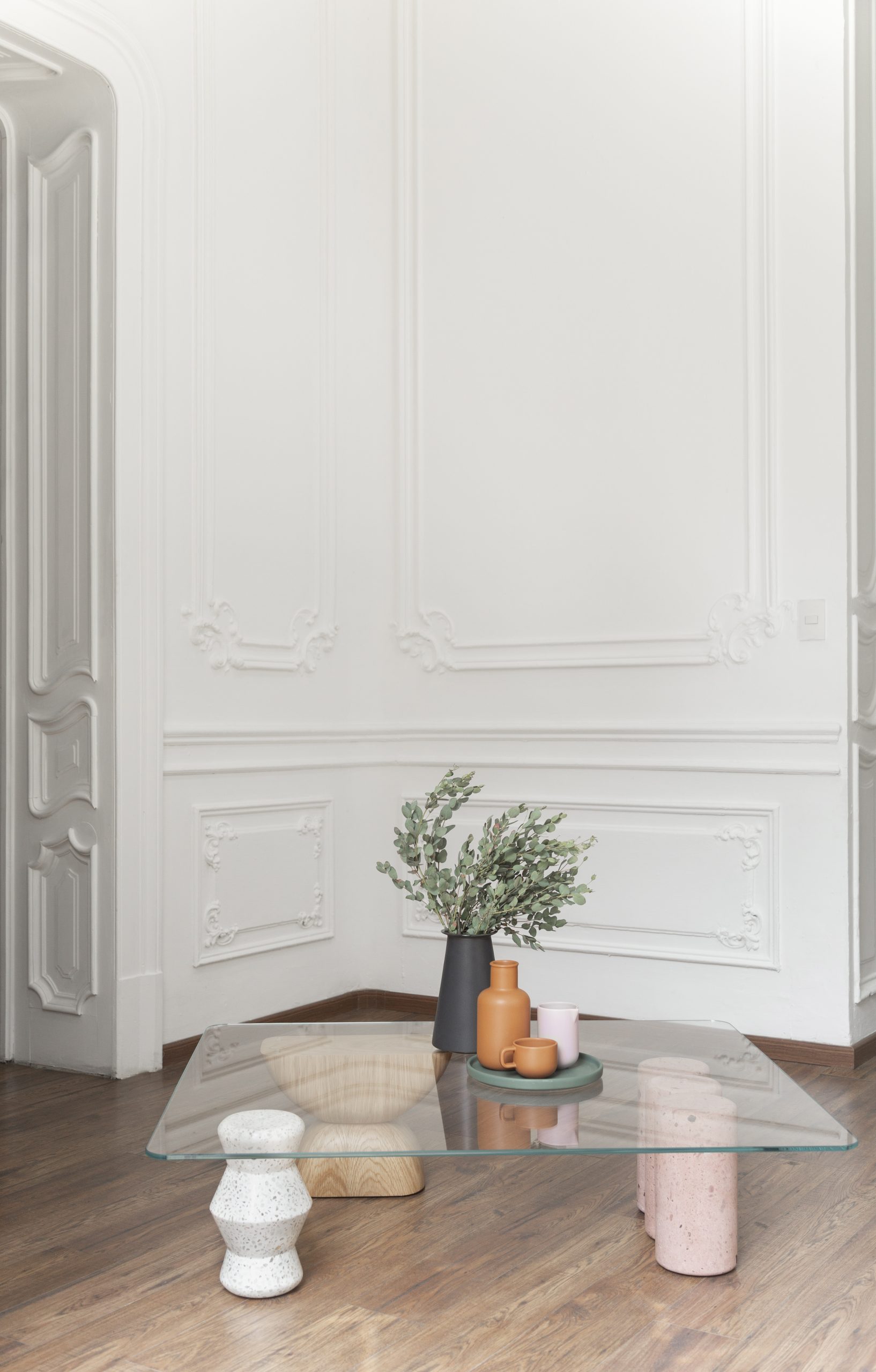
Rosedal cantera. This table has a tempered glass top and has three pieces with contemporary shapes made of white oak, pink quarry and white terrazzo with gray sparks.
What projects are you working on now?
LS: We are close to starting a commercial interior design project for an apartment building in Chapultepec.
In apartment projects like one in Colonia Napoles or another one led by Andrea called Londres, here in the Juárez neighborhood, we have a very close relationship with the client so they become friends and we design everything thinking about them and their life. They give us a lot of creative freedom and the design is comprehensive in finishes, areas, furniture.
AF: We are about to deliver a house in Napa Valley near San Francisco, which has been a very long process between design and logistics. She is a client who met us through 1st Dibs and for whom we furnished the common areas of the house. Some pieces were custom-made and others were adjustments to previous line furniture. We also collaborated with Emma Gavaldón who designed the rugs.
It is now our most important project within the office.
What are your influences?
AF: Our influences come from different areas such as Mexican and pre-Hispanic culture and art, Brazilian design and architecture. We take those influences and try to translate them into sensations that can also have a function and a form. We admire a lot of people like Esrawe Studio, Mauricio Rocha, Tatiana Bilbao Estudio, Tezontle, Patricia Urquiola, Andrés Gutiérrez, Chic by Accident. We find them very interesting and follow their careers very closely.
LS: I really enjoy looking at design, I love it. And I think that this permeates a lot in the aesthetics when designing. In general, I find inspiration in sensations and in daily life. In concepts, philosophies, and things that do not have to do directly with design. Many times introspection and wondering where we are and where we are going, is what motivates me to design. Indeed, the aesthetics of pre-Hispanic cultures is very striking and attractive to me. I really like their way of conceiving, working, and representing the world. Aesthetically, Sabine Marcelis, Nendo, Estudio Persona, Vidivixi, Frida Escobedo and Clara Porset, are important influences.
